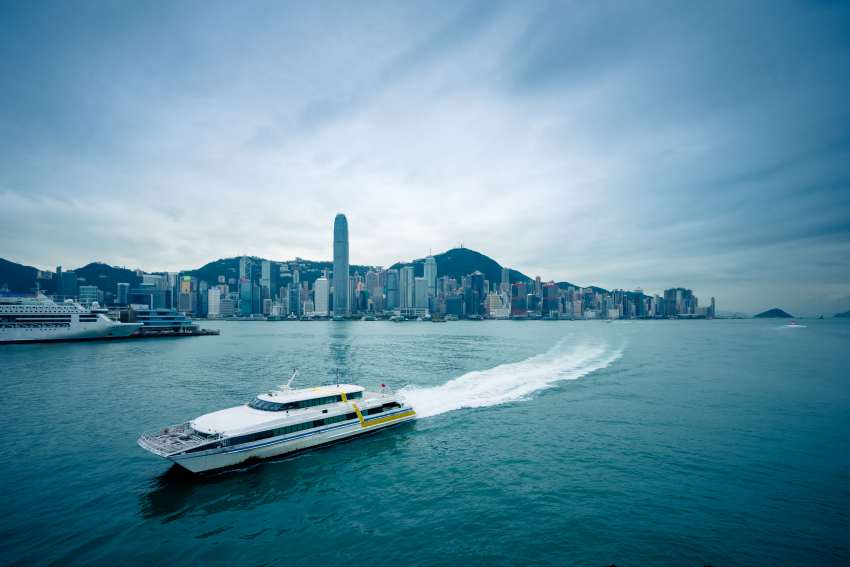Millennials & Gen Z Revolutionize China's Cruise Industry

The China cruise travel market is undergoing a significant transformation in 2025, largely driven by the energy and demands of young generations from Tier-one and Tier-two cities such as Shanghai, Qingdao, and Shenzhen. For many, cruise travel has emerged as a top choice for vacations, redefining traditional travel preferences within the country.
Young Chinese travelers, particularly those belonging to Generation Z and millennials, are increasingly opting for cruises due to their inherent convenience, affordability, and the strong social aspects they offer. These demographics are particularly attracted to opportunities for group bonding, carefully curated itineraries, and the allure of visiting international destinations like Japan and South Korea. A notable example illustrating this trend is Dong Wenxin, an MBA graduate from Fudan University, who has successfully organized week-long round-trip cruises for former students. These voyages, departing from Shanghai, provide a unique blend of relaxation and social interaction, with prices varying from 3,000 to 10,000 yuan per person based on the ship's luxury level.
Digital platforms have become indispensable in the cruise booking ecosystem for young Chinese travelers. Platforms such as Xiaohongshu (RedNote), Douyin (TikTok China), and Ctrip are pivotal for inspiring trips, facilitating planning, and enabling reservations. Data indicates that over 78% of outbound travelers conduct online research before their departure, underscoring the critical importance of a robust digital presence for cruise operators aiming to attract this tech-savvy demographic.
The escalating demand for cruises is visibly reflected in the rising number of cruise ship visits to Chinese ports. Qingdao, for instance, is projected to host over 40 cruise ship visits in 2025, effectively doubling the figures recorded in 2024. Similarly, Tianjin International Cruise Home Port anticipates more than 40 inbound and outbound cruise ship visits within the first quarter alone, highlighting a nationwide surge in cruise activity.
This boom in cruise tourism has profound implications for local economies. Port cities like Shanghai, Qingdao, and Shenzhen are experiencing heightened economic activity, driven by the substantial influx of cruise passengers. This translates into increased demand for local services, a boost for the hospitality and retail sectors, and significant contributions to job creation and overall economic growth. Furthermore, the expansion of the cruise industry has spurred essential infrastructure developments, including the construction of new cruise terminals and the enhancement of existing port facilities, which further strengthens the broader tourism sector.
Looking ahead, China’s cruise tourism sector is set for sustained growth, propelled by evolving travel preferences and the expanding market for unique travel experiences among its younger population. As millennials and Generation Z become more dominant in the travel landscape, the cruise industry is actively adapting, introducing innovative offerings, leveraging improved technology, and crafting tailored experiences to meet their specific needs. This dynamic growth is poised to create new opportunities for cruise operators and fundamentally change China’s perception and engagement with ocean travel.
A significant future trend is the move towards highly personalized and themed cruise experiences. Young travelers, particularly those in their 20s and 30s, are seeking more than just relaxation; they desire unique and memorable vacations aligned with their interests, whether it be adventure, wellness, or cultural exploration. In response, cruise operators are expected to launch a variety of themed cruises.
You may also like...
Diddy's Legal Troubles & Racketeering Trial

Music mogul Sean 'Diddy' Combs was acquitted of sex trafficking and racketeering charges but convicted on transportation...
Thomas Partey Faces Rape & Sexual Assault Charges

Former Arsenal midfielder Thomas Partey has been formally charged with multiple counts of rape and sexual assault by UK ...
Nigeria Universities Changes Admission Policies

JAMB has clarified its admission policies, rectifying a student's status, reiterating the necessity of its Central Admis...
Ghana's Economic Reforms & Gold Sector Initiatives

Ghana is undertaking a comprehensive economic overhaul with President John Dramani Mahama's 24-Hour Economy and Accelera...
WAFCON 2024 African Women's Football Tournament

The 2024 Women's Africa Cup of Nations opened with thrilling matches, seeing Nigeria's Super Falcons secure a dominant 3...
Emergence & Dynamics of Nigeria's ADC Coalition

A new opposition coalition, led by the African Democratic Congress (ADC), is emerging to challenge President Bola Ahmed ...
Demise of Olubadan of Ibadanland
Oba Owolabi Olakulehin, the 43rd Olubadan of Ibadanland, has died at 90, concluding a life of distinguished service in t...
Death of Nigerian Goalkeeping Legend Peter Rufai

Nigerian football mourns the death of legendary Super Eagles goalkeeper Peter Rufai, who passed away at 61. Known as 'Do...
Recommended Articles
Italy's New Luxury Train 'La Dolce Vita'

Italy unveils ‘La Dolce Vita’, a new luxury train designed to redefine rail travel by blending Italian elegance, culture...
EU Proposes 2040 Climate Target with Carbon Credit Allowance

The European Commission has proposed a 90% reduction in greenhouse gas emissions by 2040, aiming for a more flexible app...
Jeff Bezos & Lauren Sanchez Wedding Celebrity Details

The extravagant Venice wedding of Jeff Bezos and Lauren Sánchez sparked global attention, from its multi-million dollar ...
July 4th Holiday Travel Predictions

The Fourth of July holiday weekend is set to be the busiest travel season on record, with over 72 million Americans proj...
US Strikes on Iran Nuclear Sites & International Responses

The United States launched airstrikes on three Iranian nuclear facilities on June 22, 2025, dramatically escalating tens...